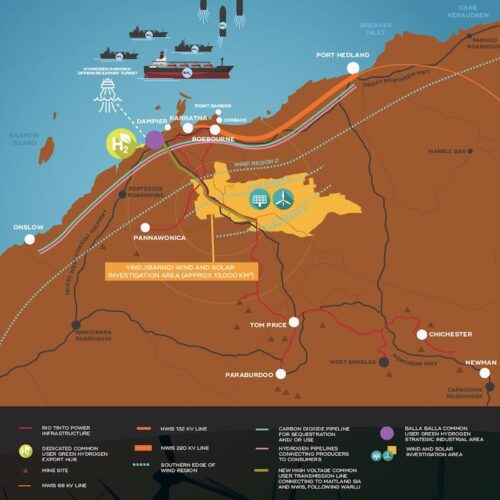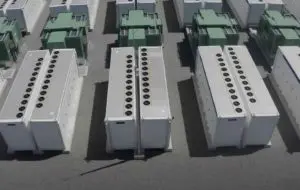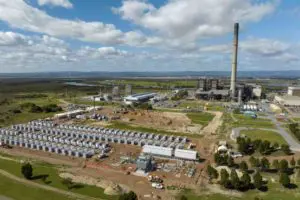Traditional owners of Yindjibarndi lands in Western Australia’s Pilbara region will lead the development of massive new hybrid renewables project on country, with plans to combine around 3GW of wind, solar and battery storage to power major industrial energy users.
The multi-billion-dollar project joins a growing number of multi-gigawatt renewables developments planned for the wind and solar rich Pilbara region, but stands apart as one of the largest Indigenous-led renewable initiatives in Australia.
The huge project, which in its first stage will target 750MW of wind, solar and batteries will be developed by the Yindjibarndi Energy Corporation (YEC), a new entity formed by a partnership between the Yindjibarndi Aboriginal Corporation (YAC) and established international renewables developer Acen Corporation.
The companies said on Monday that the Yindjibarndi people and Acen will work together to develop the renewable generation and storage projects on Yindjibarndi Ngurra – an area covering approximately 13,000km2 within the Yindjibarndi Native Title Determination Areas, inland from the major industrial port of Dampier.

The agreement includes ensuring Yindjibarndi approval of all proposed project sites, Yindjibarndi equity participation of 25% – 50% in all projects, preferred contracting for Yindjibarndi-owned businesses, and training and employment opportunities for Yindjibarndi people.
YAC chief Michael Woodley says the Yindjibarndi people have long understand their country is well located for renewables development, and so made the decision early to lead.
“We established a small team and set out to find a partner with the right capabilities and values, which led us to Acen,” Woodley said in a statement.
“The agreement … provides long-term economic benefits to our community, whilst also ensuring that we can protect and preserve all areas within Yindjibarndi Ngurra which are of cultural, spiritual, and environmental significance to us.
“The partnership will also create sustainable, long-term training and employment opportunities on country for our people,” he said.
YEC says the first stage of the project will target of 750MW of combined wind, solar, and battery storage to be in construction within the next few years, representing an investment of more than $1 billion.
Through YEC, technical studies are now underway to progress investigation, permitting, connection, and development activities.
Stage two would then target a further 2GW-3GW of combined wind, solar, and battery storage – ultimately aiming to generate more renewable energy than is currently being produced by Western Australia’s largest coal-fired power plant.
Craig Ricato, the Yindjibarndi-appointed director of YEC, who will work alongside Acen’s Anton Rohner in leading the project, says the fact that the traditional owners were able to initiate development is the “differentiating factor.”
“They don’t want this to be like mining part two,” he told RenewEconomy in an interview on Monday.
“It’s not just like a royalty, per year, for 10 years. This is long-term … these projects are 30-plus years of significant revenue to the community to basically take control of their own destiny, and it’s all about self determination,” Ricato says.
“This will flow funds back to the Yindjibarndi’s Triple-C model, which is community, culture and commercial. It will support… the technical skills development of huge amount of people, it’ll help the return-to-country movement, but it’s also going to support community, in education, health, housing.”
Ricato says that YAC spoke to a number of potential partners for the project and settled on Acen because of the way they have engaged with traditional owners on other renewable energy projects – and because they are currently one of the biggest developers in the country.
“They’re spending money and they’re well capitalised,” he said.
“We’ve also had some very, very good engagement with WA government departments … and some very, very good early stage commercial discussions with a number of groups.
“We’re obviously cautious,” Ricato adds, “because we’re just getting started. …We don’t want to go out there and start talking to people about tens of gigawatts.
“We actually think that there is a need, now, based on decarbonisation, of just what the major industrials in that area have actually committed to.
“We understand the challenges to the Pibara, particularly the construction costs and transmission. …But we also include transmission and transmission solutions as part of our projects,” Ricato says.
“So we’re working with the operators of NWIS [North West Interconnected System owned by Horizon Power] and we’ve already started early stage discussions about potential transmission corridors as well.”
Acen’s Rohner says his company wanted to develop a project that had meaningful indigenous representation and involvement.
“It’s not words,” he told RenewEconomy, and “this ain’t a royalty payment.
“This is a true deep involvement from site selection to … development, to participation in equity.
“It’s really about giving back some of our expertise to the First Nations groups and really leading from the front – it’s a very active involvement from all parties,” Rohner said.
For Acen International – the listed energy platform of the Philippines based Ayala Group – the Pilbara plans add to a fast-growing pipeline of Australian projects.
Among them are one of the nation’s biggest solar farms, the 720MW New England project, which will soon be joined by a newly upsized 1.4GW (1,400MW) big battery with 2.8GWh, or two hours of storage – also one of Australia’s biggest.
Acen is also behind a couple of big wind energy projects in Tasmania, inherited as part of its acquisition of UPC\AC Renewables.
The Robbins Island Renewable Energy Park proposes to install up aeound 100 wind turbines over the western two-thirds of the north-west Tasmanian island of the same name, and potentially battery storage.
The nearby Jim’s Plain Renewable Energy Park, also owned by Acen, will include up to 31 wind turbines and solar PV up to 240MW.
Acen International CEO Patrice Clausse says the company is “grateful” for the trust of the Yindjibarndi community to responsibly and jointly explore development opportunities on their country.
“The Pilbara region is home to some of the largest industrial energy users globally, many of which have expressed their desire to participate in a transition to a carbon neutral future,” Clausse said in a statement.
“Commercial discussions are in motion and we’re currently having encouraging conversations with potential offtake customers to purchase the renewable energy,” Clausse said.
The deal has been hailed by Clean Energy Council chief Kane Thornton as setting a new benchmark for meaningful participation by Indigenous Australians in Australia’s transition to renewables.
“It represents the kind of leadership and innovation that is needed to drive Australia’s equitable transition to becoming a renewable energy powerhouse,” Thornton said.










